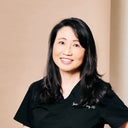Thank you for your question. You are planning to have a suture technique for your Asian eyelid procedure to bring the crease level higher and to make it more defined. You do intend in the future to have the incisional method to deal with any sagging skin. You express a concern about the non-incisional technique or suture method causing scar tissue, where it will be, and if it will challenge the outcome of a future surgery.


